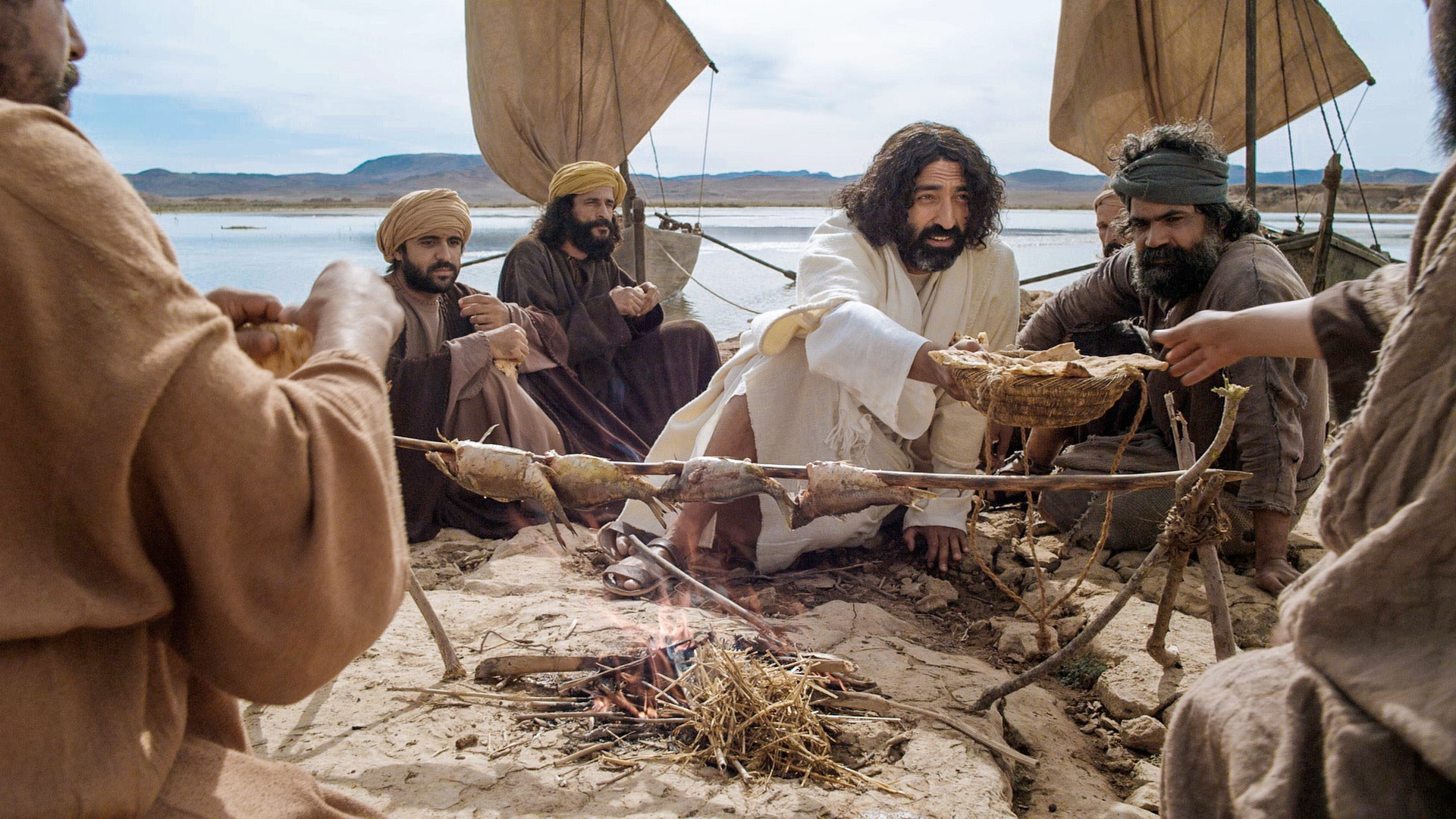
[1]
Afterward Jesus appeared again to his disciples, by the Sea of Galilee.
Jesus said to them, “Come and have breakfast.”[2]
Jesus taught and healed, then was sacrificed, rose, and sent his Holy Spirit
He went to Nazareth, where he had been brought up, and on the Sabbath day he went into the synagogue, as was his custom. He stood up to read, and the scroll of the prophet Isaiah was handed to him. Unrolling it, he found the place where it is written:
“The Spirit of the Lord is on me,
because he has anointed me
to proclaim good news to the poor.
He has sent me to proclaim freedom for the prisoners
and recovery of sight for the blind,
to set the oppressed free,
to proclaim the year of the Lord’s favor.”
Then he rolled up the scroll, gave it back to the attendant and sat down. The eyes of everyone in the synagogue were fastened on him. He began by saying to them, “Today this scripture is fulfilled in your hearing.”[3]
The canonical gospels combine stories about Jesus with records of his teaching. Despite important variations between them, they share a common narrative thread and a common purpose. The narrative falls roughly into two halves.
The first establishes Jesus as a teacher and miracle worker in Galilee (the northern province of Israel). Though baptized by John the Baptist, he launches an independent career and wins his own followers. Jesus works amongst his people, the Jews, and acknowledges their God and scriptures. He offers an interpretation of the Jewish faith that is critical towards the religious elite but favourable to those who are destitute, humble, of no account.
The second part of the narrative shifts to Jerusalem in Judea (the southern part of Israel), where Jesus’ provocative ministry alarms the governing authorities (the Romans, supported by Jewish leaders) and leads to his arrest, trial, and execution. He is crucified as a criminal and buried in a tomb. When some of his followers visit the grave three days later, they find it empty. Miraculous appearances by Jesus convince his followers that God has raised him from the dead. The Book of Acts (written by the author of Luke’s gospel) continues the story in the New Testament, recounting how Jesus, having ascended into heaven, pours out his Spirit on his followers at Pentecost and brings into being the Christian community.[4]
Jesus gave us the Holy Spirit so we can live close to God
“Nevertheless, I tell you the truth: it is to your advantage that I go away, for if I do not go away, the Helper will not come to you. But if I go, I will send him to you.”[5]
…the Pauline view presents human beings not with the challenge of realizing their own divinity by going within, but with the duty of looking upward toward ‘the Lord’ (Paul’s preferred title for Jesus and for God) who alone can save them from their destiny of sin and death.
For although human beings have no natural ability to become a ‘Son of God’ like Christ, by supernatural grace they may be transformed into new beings – ‘sons by adoption’ in Paul’s terms. Humans are saved not by their own power or potential, but by being ruled by Christ and living in, through, and for him rather than for themselves.
For Paul, the ritual of water baptism symbolizes the death of the old self and the birth of a new Christ-like self. After baptism, as Paul puts it, ‘it is no longer I who live, but Christ who lives in me’. The baptized do not become gods in their own right, but members of ‘the body of Christ’ – parts of a divine collectivity under the headship of Christ. Their transformation begins on earth, but will culminate in their resurrection from the dead.[6]
- “Jesus appears to Disciples in Galilee.” FreeBibleImages.org, www.freebibleimages.org/photos/jesus-appears-galilee/. Accessed 25 Feb. 2017.
- The Bible. New International Version, 2011. John 21:1,12.
- The Bible. New International Version, 2011. Luke 4:16-21.
- Woodhead, Linda. Christianity: a very short introduction. OUP Oxford, 2004, p. 10.
- The Bible. English Standard Version, Crossway, 2001. John 16:7.
- Woodhead, Linda. Christianity: a very short introduction. OUP Oxford, 2004, pp. 20, 22.